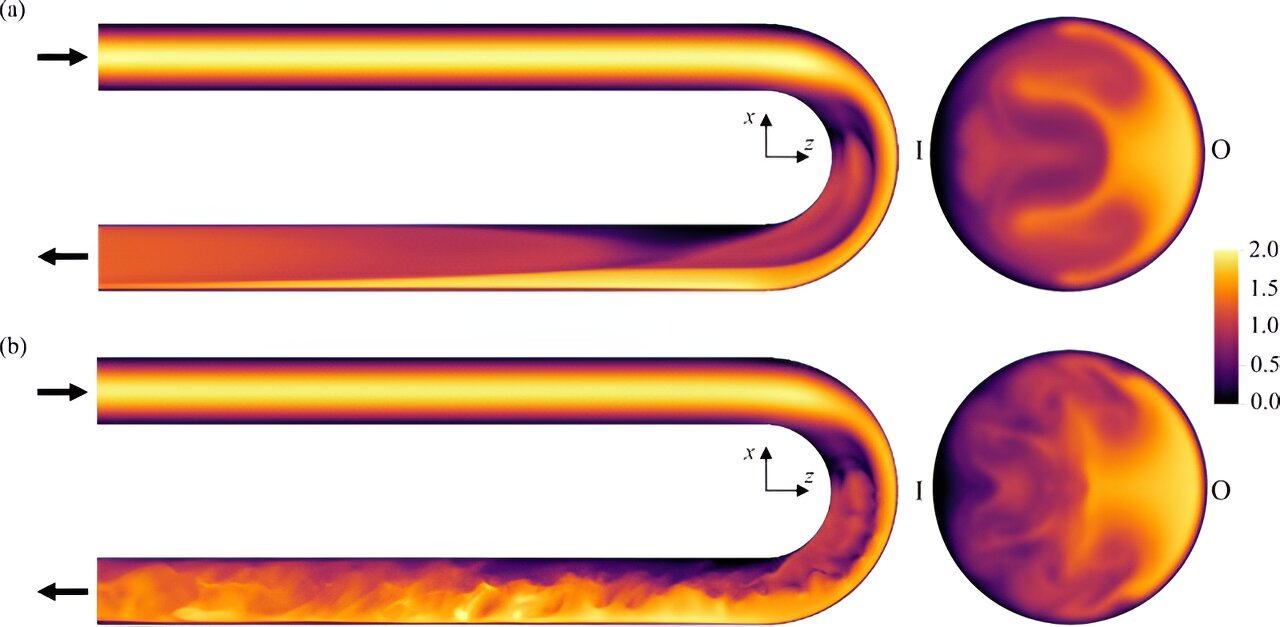How much stress do pipes undergo when a liquid flows through them, and how does it depend on the degree of curvature of the pipe?
Bends in pipes are different than their straight sections because, in the curved sections, there are outward centrifugal forces due to the inertia of the liquid inside. That force is balanced by a pressure gradient from the outer wall of the pipe to the inner wall. Because the fluid velocities in an imaginary slice through the pipe will not be equal in the curved section—for example, the velocity near the outer wall of the pipe will be greater than near the inner wall—a secondary flow pattern, besides the motion through the pipe, is set up perpendicular to the main flow direction.
This motion is a pair of counterrotating, symmetric vortices, called Dean vortices, after the British scientist William Reginald Dean, which appear in the first bend in the pipe and can complicate the flow after, for both laminar and turbulent flow.
For a single bend, the internal geometry of the flow can be described by the Dean number, which depends on the radius of the pipe relative to the amount of curvature in the bend, and the fluid’s Reynolds number, which is the ratio of inertial forces to viscous forces within a fluid. Fluids have a critical Reynolds number that characterizes their transition from smooth, laminar flow to turbulent flow, and this can be twice as large as in straight flow. (In fact, turbulent flow from a straight pipe can return to laminar upon entering a spiral section of the pipe.)
Roughly, Reynolds numbers below 2,000 indicate laminar flow, those above 3,500 turbulent flow, with a transition from laminar to turbulent flow occurring somewhere in between. The Dean number measures the intensity of the internal, secondary flow.
2023-12-10 07:00:03
Article from phys.org
